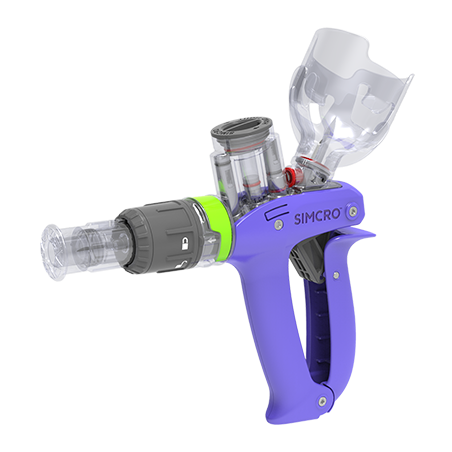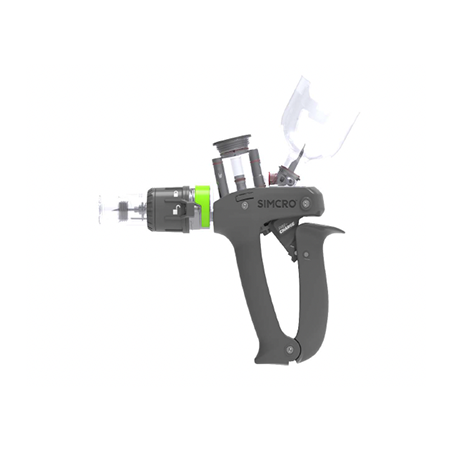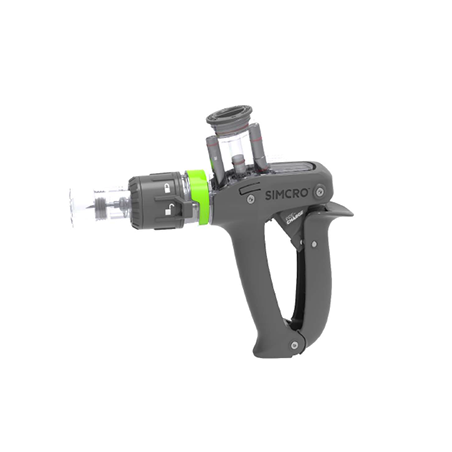Due to the major impact of swine influenza A virus (swIAV) infection on pig production and its zoonotic potential, there is great interest in controlling the disease and its spread. Besides improving management factors, vaccination is the key element to reduce shedding and spreading within the herd.
As there are major antigenic and genetic differences between the most circulating swIAV strains in Europe and North America, the vaccines for pigs used in the different regions contain entirely different strains. An exception are the vaccines containing the pandemic strain H1pdmN1, which is globally circulating and therefore the vaccines don´t differ too much in their antigen. There are two vaccines with EMA registration available in Europe, a trivalent vaccine containing H1N1, H1N2 and H3N2 in combination with a carbomer adjuvant. The other vaccine contains a pandemic H1N1 strain using also the carbomer adjuvant. There are also a bi-valent oily adjuvanted (H1N1, H3N2) vaccines available in some countries in Europe.

Herd-specific vaccines, which are widely used in the US, can be used in the EU if there is no licensed vaccine available for the isolated virus subtype. The EU Regulation 2019/6, which came into force on 27.01.2019 and is applied since 28.01.2022 as part of the reorganisation of veterinary medicines legislation regulates the use of herd-specific vaccines. There is stipulated that the use of a herd vaccine is only permitted if no vaccine is authorised for the indication in question (Section 3, Article 106(5)). Due to the constantly emerging reassortants and the ever-increasing antigenic distances between viruses (Henritzi et al. 2020), there is a growing desire to update the antigens in veterinary vaccines regularly, as in human vaccines. However, European legislation does not provide for this. In the current situation, updating the strains entails a lengthy approval process. Besides that, recently published studies show still good efficacy of the existing vaccines. Animals vaccinated with the trivalent vaccine mentioned before, were infected with a H1N2 strain that was antigenically distant from the H1N2 vaccine strain and indeed no longer serologically cross-reactive. Though, the study showed that the animals were fully clinically protected, and virus excretion was significantly reduced (Deblanc et al. 2020). In another infection trial it was demonstrated that animals vaccinated with the trivalent vaccine showed next to reduced clinical signs and shedding also a reduced probability of the production of new reassortants (López-Valinas et al. 2021). In the conclusion the author’s state: "Stricter vaccination schedules should be carried out on farms to avoid maximum SIV circulation, increasing the current percentage of swine population vaccinated against SIV in Europe (10-20%)."
Vaccines used in human medicine are generally not adjuvanted and thus have a narrower spectrum of activity than vaccines with adjuvants. The vaccines’ protection is mainly based on homology to the HA antigen (Grebe et al. 2008), hence the assumption is valid that combining both approved vaccines cover the majority of strains currently in circulation. It is important to remember that inactivated vaccines can reduce clinical expression of the disease and reduce viral excretion. They, like most vaccines, are not able to lead to sterile immunity. It was even shown that, in animals vaccinated with an inactivated vaccine, almost no virus excretion could be measured after being infected with the same virus used to produce the vaccine (100% homologous). Nevertheless, these vaccinated and infected animals were able to transfer the virus to co-housed naive animals (Everett et al. 2021). This impressively demonstrates that only full vaccination coverage of all age groups offers optimal vaccine protection and that unvaccinated animals (nursery/fattening) can be a constant source of reinfection (White et al. 2017). The role of maternal derived antibodies (MDA) in influenza infection has been studied intensively in recent years. It is important to remember here that, while MDA may afford clinical protection to suckling piglets, they cannot prevent their infection (Deblanc et al. 2018). It has also been shown that, even though maternal protection does reduce clinical symptoms, piglets may show mild clinical signs (Loeffen et al. 2003). Reducing the infection pressure in the sow herd as far as possible via regular mass vaccination is therefore more promising than trying to prevent infection of suckling piglets by stimulating high levels of MDA via reproduction-oriented vaccination protocols (White et al. 2017).
Management is critical in supporting the control of endemic influenza
To control endemic influenza, the same rules apply as for successful PRRSV control. Stable vaccination coverage, combined with good gilt management (sufficiently long quarantine, vaccination, careful integration into the sow herd) and piglet management (sufficient colostrum supply, vaccination, ideally a youngstock-free phase), is crucial (Torremorell et al. 2009; White et al. 2017). If vaccinations are combined with strict internal biosecurity practices, this would additionally help to decrease exposure to swIAV and other pathogens to piglets and further production stages. Indirect transmission of flu can occur when pigs have contact with contaminated clothing, tools, or people, all of which can act as carrier, having virus and other pathogens on their surfaces. Flu can be found on the hands and overalls of workers after handling infected pigs, especially when pigs are picked up for vaccination and weaning. It can also be found on the surfaces of the carts, tools, and instruments used to move and handle pigs. Hand washing or changing disposable gloves frequently and even changing overalls after vaccination and loadout of pigs at weaning are recommended (Torremorell and Culhane, 2022).
Also the recommendations from the McRebelTM plan help to reduce secondary bacterial infections in piglet management and to prevent virus circulation (Figure 1).
Figure 1. McRebel Plan (Management Changes to Reduce Exposure to Bacteria to Eliminate Losses from PRRSV) (McCaw 1995)
|
1. Avoid cross-fostering piglets between litters for litter resizing or to save sick pigs, fall-behinds and runts. |
|
2. Cross-foster to equalise number of piglets per litter only within the first 24 hours after birth. |
|
3. Only move piglets within farrowing rooms at birth. Do not move sows or piglets between rooms. |
|
4. Avoid using nurse sows for weak-born PRRSV-infected pigs, fall-behinds and runts. |
|
5. Minimise handling of piglets, especially in routine treatments like antibiotic treatments or extra iron injections. |
|
6. Evaluate the effect of non-essential processing or treatments on disease rates among suckling and nursery piglets. |
|
7. Immediately remove very sick piglets that have no chance of a full recovery. |
|
8. Avoid putting piglets back. Lightweight or fall-behind piglets should not be moved to younger piglet rooms or to nurse sows. |
|
9. DO NOT FEED “CONTACT SOUP”, i.e. material containing infectious agents from runts or aborted/stillborn fetuses, originally meant to boost the immune system. |
|
10. Nursery piglets should be loaded strictly ALL-IN-ALL-OUT. Leave 2 to 3 days between groups for cleaning and disinfection. |
| 11. Nursery compartments may be loaded ALL IN by early weaning some of the oldest, best-developed piglets from the next age group. |
Only the concerted application of these measures can lead to lasting success. Influenza viruses are not only introduced into farms via bought-in animals or airborne transmission; humans can also be a source of infection for Influenza viruses (Grøntvedt et al. 2013). It is therefore recommended that pig house staff and all persons working in swine production (veterinarians, consultants, feed suppliers, etc.) should have up-to-date influenza vaccine protection.










